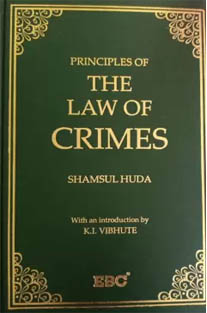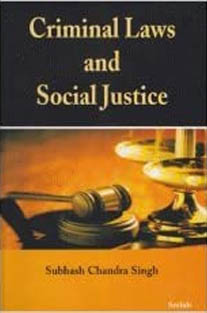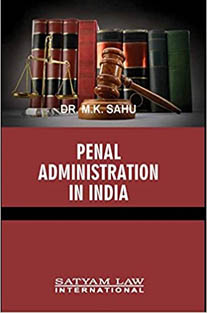Penal Administration in India
₨ 1,920.00
The prime object of criminal law is to protect society against criminals and law-breakers. For this purpose the law holds out threats of punishments to prospective lawbreakers as well as attempts to make the actual offenders suffer the prescribed punishments for their crimes. Therefore, criminal law, in its wider sense, consists of both the substantive criminal law and the procedural (or adjective) criminal law. Substantive criminal law defines offences and prescribes punishments for the same, while the procedural law administers the substantive law. The golden rule in the criminal justice is that, “it is better that a thousand or even a million guilty persons should escape than that one innocent person should not suffer.” The criminal justice system is based on the principle that the prosecution is forced to prove the guilt of the accused beyond any reasonable doubt. However, no such burden is placed on the accused to prove his innocence. He has to rebut the accusations only. For most of the offences, the law prescribes the maximum sentence but not the minimum. Power, consequently, is bestowed upon the judicial officers to impose a suitable sentence in the light of the facts and circumstances of the individual case. What has to be ensured is that the discretion, which must in the very nature of things be granted to judicial officers, for this purpose is exercised in a proper, judicious manner and that is not allowed to degenerate into some kind of caprice and arbitrariness. This is a standard text book which deals with the penal system beginning from the ancient times in India to modern penal administration. In the present book, it has been elaborately discussed that even though the punishment has been the mainstay of handling and controlling crime but, over the periods, the philosophy of punishment has undergone drastic changes and modifications.
Description
The prime object of criminal law is to protect society against criminals and law-breakers. For this purpose the law holds out threats of punishments to prospective lawbreakers as well as attempts to make the actual offenders suffer the prescribed punishments for their crimes. Therefore, criminal law, in its wider sense, consists of both the substantive criminal law and the procedural (or adjective) criminal law. Substantive criminal law defines offences and prescribes punishments for the same, while the procedural law administers the substantive law. The golden rule in the criminal justice is that, “it is better that a thousand or even a million guilty persons should escape than that one innocent person should not suffer.” The criminal justice system is based on the principle that the prosecution is forced to prove the guilt of the accused beyond any reasonable doubt. However, no such burden is placed on the accused to prove his innocence. He has to rebut the accusations only. For most of the offences, the law prescribes the maximum sentence but not the minimum. Power, consequently, is bestowed upon the judicial officers to impose a suitable sentence in the light of the facts and circumstances of the individual case. What has to be ensured is that the discretion, which must in the very nature of things be granted to judicial officers, for this purpose is exercised in a proper, judicious manner and that is not allowed to degenerate into some kind of caprice and arbitrariness. This is a standard text book which deals with the penal system beginning from the ancient times in India to modern penal administration. In the present book, it has been elaborately discussed that even though the punishment has been the mainstay of handling and controlling crime but, over the periods, the philosophy of punishment has undergone drastic changes and modifications.
Additional information
| Authors | DR MK Sahu |
|---|---|
| Cover-Types | Hardcover |
| ISBN/ISSN | 9789382823728 |
| Publishers | Satyam Law International |
| Pages | 353 |
| Year of Publication | 2017 A.D |





